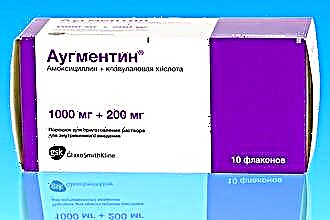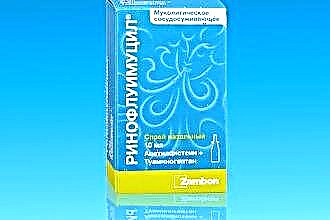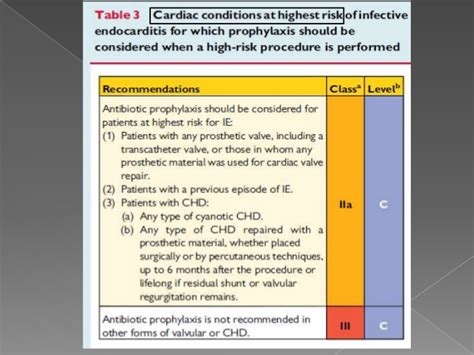 What to do if nasal congestion persists? A protracted course of inflammatory processes in the respiratory tract may indicate the development of serious diseases. If the discomfort does not go away for 2 weeks, you need to seek help from a doctor. Only according to the results of a rhinoscopic examination, the otolaryngologist will be able to establish the cause of the inflammation and determine the appropriate therapy regimen.
What to do if nasal congestion persists? A protracted course of inflammatory processes in the respiratory tract may indicate the development of serious diseases. If the discomfort does not go away for 2 weeks, you need to seek help from a doctor. Only according to the results of a rhinoscopic examination, the otolaryngologist will be able to establish the cause of the inflammation and determine the appropriate therapy regimen.
In today's publication, the most likely causes of persistent disturbances in nasal breathing will be considered, as well as methods of drug and apparatus treatment of respiratory diseases.
Possible reasons
Prolonged nasal congestion is an abnormal condition that in most cases indicates the development of chronic inflammation in the nasopharynx. Allergens, infectious agents and neurovegetative disorders are often provocateurs of pathological reactions. It is impossible to ignore the manifestations of the disease, since inflammatory processes in the mucous membranes can cause more serious complications.
Delayed treatment of nasal congestion leads to the development of sinusitis, atrophic rhinitis and polyposis sinusitis.
If the violation of nasal breathing lasts longer than 2-3 weeks, there may be several reasons for this:
- bad habits (smoking);
- tumors in the nose (cyst, nasal polyp);
- deformation of the nasal septum;
- persistent decrease in immunity;
- chronic respiratory disease;
- congenital obstruction of the nasal passages;
- work in hazardous production.
To find out the true cause of rhinorrhea or nasal congestion, you need to do an examination with an otolaryngologist. According to the condition of the nasopharyngeal mucosa, concomitant clinical manifestations and the result of bacterial culture, the doctor will be able to determine the type of disease and develop an optimal treatment strategy.
Treatment methods
If your nasal congestion persists for a long time, it is most likely caused by a sluggish inflammation in the respiratory tract. Adverse reactions in the respiratory system can be triggered either by microbes or by irritating substances (allergens). Treatment for chronic rhinitis involves:
- elimination of foci of inflammation;
- elimination of other sluggish diseases;
- drug and apparatus therapy;
- strengthening the body's immune defenses.
Comprehensive treatment of respiratory diseases can only be compiled by a doctor based on the results of microbiological, rhinoscopic and endoscopic examinations.
To cure a chronic disease, you will need to undergo antibacterial or desensitizing (antiallergic) therapy. Recurrence of inflammation can be prevented if general and local immunity is strengthened. For this, the patient may be prescribed immunostimulants, herbal adaptogens (tonic substances) or vitamin-mineral complexes.
Features of pharmacotherapy
Pharmacotherapy is a non-invasive method of treating ENT diseases, which involves the use of drugs. If the patient has a stuffy nose for a long time, the doctor will prescribe medications for him with symptomatic and etiotropic action. The drugs of the first group will help to relieve nasal breathing and eliminate the manifestations of the disease, and the second - to destroy the infection or stop allergic reactions in the respiratory tract.
Antibiotics
Prolonged rhinitis most often indicates a bacterial nature of inflammation in the nasal cavity or paranasal sinuses. The pathogenic microflora can be represented by staphylococci, Haemophilus influenzae, meningococci, etc. You can kill bacteria by taking systemic antibiotics. Penicillins are first-line drugs, but they can cause allergic reactions in patients. If necessary, they are replaced with cephalosporins or macrolides.
If nasal congestion continues for 2 months or more, patients are usually prescribed:
 Augmentin;
Augmentin;- "Framycetin";
- "Medikamycin";
- "Azithromycin";
- Ceftriaxone.
An overdose of antimicrobial agents can cause dysbiosis and a decrease in general immunity, which is fraught with the development of fungal flora in the foci of inflammation.
If you take antibiotics in courses of 7-10 days, the symptoms of nasal inflammation will disappear within two to three weeks.
However, experts warn that premature refusal of medications can lead to repeated inflammation of the airways and the development of more serious diseases.
Antihistamines
If a high concentration of IgE immunoglobulins is found in the blood serum, the patient is diagnosed with allergic rhinitis. Inadequate and untimely treatment of pathology leads to chronic inflammation of the nasopharyngeal mucosa and, as a result, a lingering rhinitis. Treatment of allergic rhinitis is carried out in several directions at once:
- identification and elimination of a causal allergen;
- relief of an allergic reaction;
- acceleration of recovery processes in the affected tissues.
Pollinosis (allergic rhinoconjunctivitis) in an adult is exacerbated only during the flowering periods of wind-pollinated plants. But with inadequate treatment of the disease, the patient may experience cross-allergic reactions. In this case, food, household chemicals, house dust, etc. can provoke inflammation in the respiratory tract.
If nasal congestion does not go away due to the development of hay fever, the patient is prescribed the following drugs:
- systemic antihistamines - Pipolfen, Erius, Rivtagil;
- glucocorticosteroid drugs - "Budesonide", "Beclomethasone", "Mometasone furoate";
- mast cell stabilizers - "Iphyral", "Primalan", "Kromosol".
For the period of treatment of hay fever, it is recommended to stop eating foods with a high degree of allergenicity.
With the correct treatment regimen, the symptoms of rhinitis disappear within a week. To prevent the re-development of hay fever, doctors recommend using barrier preparations such as Nazaval, Prevalin, etc. during the flowering periods.
Nasal preparations
Persistent rhinitis and nasal congestion are recommended to be treated with topical medications. Depending on the cause of the violation of nasal breathing, a doctor may prescribe nasal vasoconstrictor, moisturizing, antimicrobial and antiallergic agents. With their help, you can ease the course of the disease and restore normal patency in the nasal passages.
As a rule, for nasal congestion, patients are prescribed the following types of drops:
- vasoconstrictor - "Tizin", "Nazivin", "Knoxprey";
- immunostimulating - "Poludan", "Immunal", "IRS-19";
- antiseptic - "Miramistin", "Octenisept", "Collargol";
- hormonal - "Aldecin", "Nazonex", "Beconase";
- antihistamines - "Allergodil", "Sanorin Anallergin", "Cromhexal";
Although nasal agents are practically not absorbed into the systemic circulation, only a specialist can choose the appropriate drug for women during pregnancy.
Mucolytic agents
If the nose is stuffy and there is no mucous discharge, mucolytic drugs are included in the treatment regimen. They contribute to the liquefaction of muconasal secretions and their removal from the respiratory tract. The evacuation of pathological secretions from the nasal cavity prevents the development of inflammation in the paranasal sinuses.
In cases where nasal congestion does not go away for a long time, the following mucolytic drugs are prescribed to patients:
 Rinofluimucil;
Rinofluimucil;- "ACC 100";
- "Lazolvan";
- "Prospan";
- "Mukodin".
Before treating your nose with thinners, you need to consult your doctor. Some of the aforementioned drugs increase the secretory activity of the glands in the nasopharyngeal mucosa. Therefore, the irrational use of drugs can cause the development of medication rhinitis.
Physiotherapy procedures
You can restore normal nasal breathing with the help of physiotherapy procedures. In the case of chronic inflammation of the nasopharynx, two types of therapeutic measures are usually resorted to - debridement of the nasal cavity and inhalation. Washing helps to flush mucus and pathological flora from the nasal cavity, and inhalations help to eliminate inflammatory processes directly in the lesions.
Nebulizer inhalation
When treating a chronic disease caused by bacteria, it is recommended to use aerosol inhalations rather than steam. They do not increase the temperature in the nasal cavity, which could provoke the spread of infection in the respiratory tract. To restore normal nasal breathing, anti-inflammatory, mucolytic and immunostimulating drugs are usually used:
- Tonsilgon N;
- Derinat;
- Interferon;
- "Acetylcysteine";
- Rotokan.
It is impossible to use antibiotics for inhalation without a doctor's recommendation, as they can negatively affect the microflora in the nasal cavity.
The desired therapeutic effect can be achieved in the case of regular inhalations. To eliminate the manifestations of the disease, it is recommended to perform the procedure 4 times a day for 7-10 days.
Rinsing the nasopharynx
When nasal congestion lasts two weeks or more, nasal debridement with isotonic solutions is recommended. During flushing, pathological secretions and more than 70% of pathogens are eliminated from the respiratory tract. Preparations based on sea salt strengthen the walls of blood vessels in soft tissues and accelerate their recovery, thereby normalizing the patency of the nasal passages.
It is possible to eliminate chronic inflammation in the nasopharynx with the help of the following isotonic solutions:
- Sterofundin;
- "Sodium chloride";
- "Ringer's solution";
- Aqua Maris Strong;
- Morenazal.
To reduce the severity of allergic reactions in the respiratory tract, it is recommended to rinse the nose with the drug "Doctor Thais Allergol".
Isotonic solutions are absolutely safe, therefore they can be used to treat rhinorrhea, sinusitis and other pathologies of the nasopharynx in children from 3 years old. To prevent inflammation in the airways from developing a second time, it is recommended to flush for several days after the main symptoms of the disease have been eliminated.
Hardware treatment
An important place in the treatment of sluggish inflammation in the nasopharynx is occupied by hardware treatment. Electromagnetic, ultrasound and laser exposure promotes tissue regeneration in the nasal cavity and paranasal sinuses. To eliminate the manifestations of a chronic disease, it is advisable to resort to the following hardware procedures:
- endonasal electrophoresis - the introduction of medicinal solutions into the tissues of the nasopharynx in the form of ions under the influence of direct current;
- endonasal phonophoresis - the introduction of local antibiotics and antiseptics into the nasal cavity using ultrasound;
- UHF therapy - the effect on the foci of chronic inflammation by an electromagnetic field, which promotes the regeneration of the affected tissues.
The above procedures can significantly increase the concentration of medicinal substances in the respiratory tract. Injected into the foci of inflammation, drugs are practically not absorbed into the bloodstream, therefore they do not create a load on the kidneys or liver. Electrophoresis and phonophoresis are widely used in otolaryngological practice in the treatment of bacterial rhinitis, sinusitis, sphenoiditis and other diseases of the nasopharynx.
Conclusion
Obstruction of the nasal passages and congestion are a sign of inflammation of the mucous membranes in the upper respiratory tract. If symptoms persist within two to three weeks, the inflammation is most likely caused by either a bacterial infection or an allergy. Late treatment of sluggish inflammation in the nasopharynx is fraught with the development of serious complications - sinusitis, meningitis, paratonsillar abscess, etc.
Treatment of nasal congestion consists in the use of physiotherapeutic procedures (nasal lavage, inhalation), drugs (antibiotics, glucocorticosteroids, vasoconstrictors, antiseptics) and hardware procedures (phonophoresis, UHF therapy, electrophoresis). Comprehensive and well-designed therapy allows you to eliminate foci of chronic inflammation in the airways and restore tissue integrity. To prevent the re-development of the disease, it is recommended to take vitamins, herbal adaptogens and immunomodulatory agents.

 Augmentin;
Augmentin; Rinofluimucil;
Rinofluimucil;

